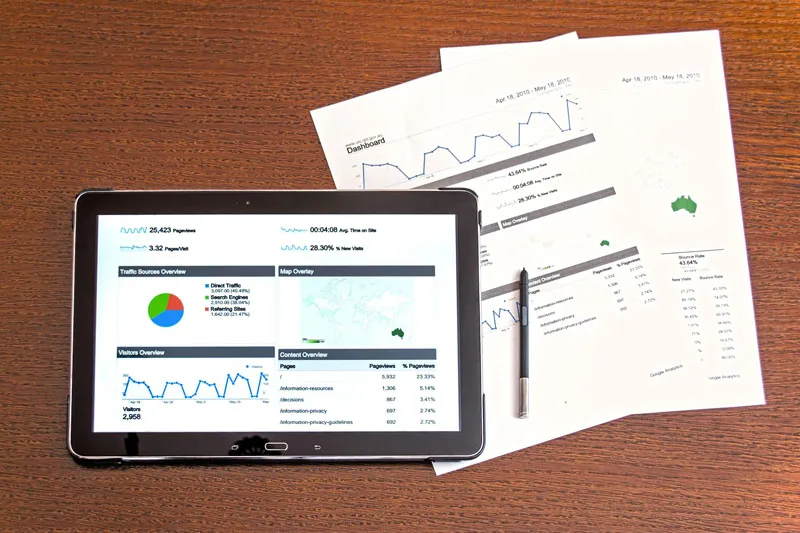Email marketing is a powerful tool that can help you drive traffic and leads to your website. By creating targeted and valuable content for your subscribers, you can increase engagement and build relationships with potential customers. In this blog post, we’ll explore eight steps to help you effectively use email marketing to drive traffic and leads to your website.
Define your audience and goals
Before you start any email marketing campaign, it’s important to define your target audience and goals. Who do you want to reach with your emails? What do you want them to do?
Start by creating buyer personas to help you understand your ideal customer. What are their pain points, interests, and goals? How can your product or service help them solve their problems?
Next, define your goals for your email campaign. Do you want to drive traffic to your website, generate leads, increase sales, or build brand awareness? Your goals will determine the type of content and calls-to-action you include in your emails.
Choose an email marketing platform
Once you have defined your audience and goals, it’s time to choose an email marketing platform that meets your needs. There are many platforms available, each with their own features and pricing structures.
Consider factors such as ease of use, automation capabilities, list management features, and integration with other tools you use. Some popular options include Mailchimp, Constant Contact, and Campaign Monitor.
Once you have chosen your platform, set up your account and start building your email list. Make sure you comply with email marketing regulations such as GDPR and CAN-SPAM, and include an easy way for subscribers to opt-out of receiving emails.
Build your email list
The success of your email marketing campaign depends on having a quality email list. There are several ways to build your list, including:
- Offering a lead magnet or incentive in exchange for email sign-ups
- Adding a sign-up form to your website or blog
- Collecting email addresses at events or in-person interactions
- Purchasing a targeted email list (Note: This option is not recommended as it can lead to low engagement and high unsubscribe rates)
Remember to be transparent with your subscribers about what type of content they will receive and how often they can expect to hear from you. And always provide an easy opt-out option.

Create valuable content
Now that you have defined your audience and built your email list, it’s time to start creating valuable content that will engage and convert your subscribers.
Your content should be tailored to your audience’s needs and interests, and provide value beyond just promoting your product or service. Consider using a mix of educational and promotional content, such as:
- Blog posts and articles
- Case studies and success stories
- How-to guides and tutorials
- Promotions and discounts
Make sure your emails are visually appealing and easy to read, with clear calls-to-action that encourage subscribers to take the desired action. And always test your emails to ensure they look great on different devices and email clients.
Set up automation and segmentation
Automation and segmentation can help you personalize your emails and improve engagement rates.
Automation allows you to set up triggered emails based on specific actions or behaviors, such as welcoming new subscribers or sending a follow-up email after a purchase. Segmentation enables you to group your subscribers based on shared characteristics such as location, interests, or behavior.
By combining automation and segmentation, you can create highly targeted and personalized email campaigns that deliver relevant content to each subscriber. This can lead to increased open and click-through rates, as well as higher conversions and revenue.
Make sure to track and analyze your email marketing metrics regularly to identify areas for improvement and optimize your campaigns over time.

Test, optimize, and measure
Like any marketing strategy, email marketing requires continuous testing and optimization to ensure its effectiveness and improve your ROI.
Start by testing different elements of your emails, such as subject lines, CTAs, and content to see what resonates best with your audience. Use A/B testing to compare two versions of an email and determine which one performs better.
Optimize your emails for mobile devices, as more than half of all emails are opened on mobile devices. Ensure your emails are easy to read and navigate on a small screen, with clear calls-to-action and simple designs.
Measure your email marketing metrics regularly to track your progress and identify areas for improvement. Key metrics to track include open rates, click-through rates, conversion rates, and unsubscribe rates. Use this data to adjust your strategy and optimize your campaigns over time.
Follow best practices and comply with regulations
Finally, it’s important to follow best practices and comply with regulations to ensure your email marketing is effective and ethical.
Some best practices include obtaining consent from subscribers before adding them to your list, sending relevant and valuable content, and providing a clear way for subscribers to unsubscribe.
Comply with regulations such as the CAN-SPAM Act in the United States, which requires that commercial emails include accurate header information, a clear subject line, and an easy way to unsubscribe. Make sure to also comply with data protection regulations, such as GDPR in the European Union, which requires that you obtain explicit consent from subscribers to collect and process their personal data.
By following these best practices and regulations, you can build trust with your subscribers and ensure the long-term success of your email marketing campaigns.
Ready to drive traffic and generate leads for your website? Take your web development game to the next level with my expertise. Visit my Upwork profile to hire me and supercharge your online presence today!





